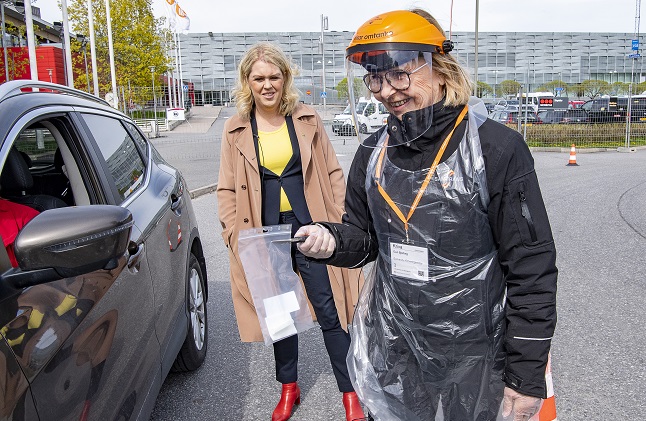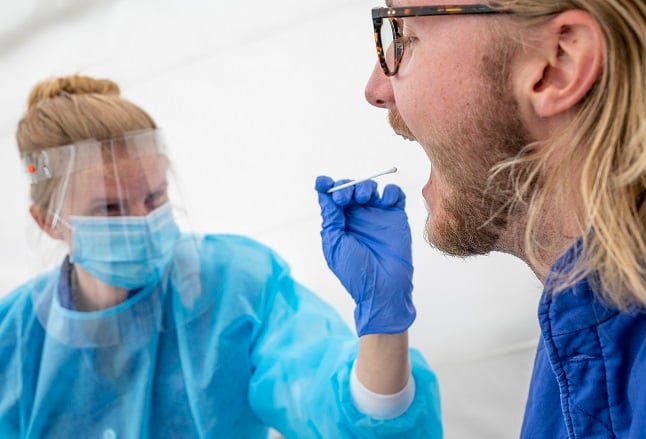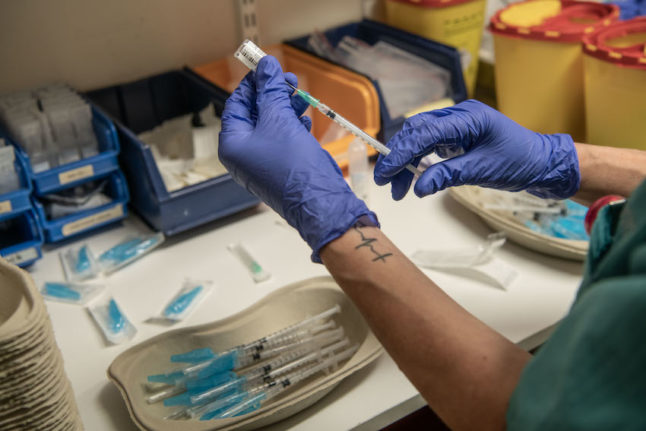Only 28,800 coronavirus tests were analysed last week, a figure which is down from 32,700 the week before, possibly because of the long holiday weekend. Weekly testing figures have increased significantly over the course of the outbreak; in the week ending March 14th, just over 4,000 tests were analysed, and the weekly testing figure only passed 20,000 in the week ending April 25th.
The map below shows the worldwide perspective on coronavirus tests per capita since the start of the outbreak. Sweden had carried out 23.64 tests per 1,000 people as of May 24th, compared to 31.59 in the UK (as of May 22nd), 31.88 in Finland (as of May 27th), 44.75 in Norway (as of May 28th), 47.18 in Germany (as of May 24th), for example.
The graph below shows daily testing rates per capita in a selection of European countries, including Sweden and its Nordic neighbours, which shows that Sweden has regularly carried out some of the fewest tests per 1,000 people. There are differences in the ways different countries record tests, including whether multiple samples from the same person are counted separately, which labs are included, and whether negative or pending tests are included.
But even by its own standards, Sweden has fallen well short of its testing goals. Health Minister Lena Hallengren had pledged that 100,000 tests would be carried out weekly by mid-May. And the capacity to carry out this number has been there since the start of the month. So what's the reason for the gap?
The Public Health Agency has said it does not consider the lower number of tests a failure, with Karin Tegmark Wisell, head of the Public Health Agency's department for microbiology, admitting that more tests needed to be done but stressing that each test must be “appropriate”, by testing groups at higher risk and ensuring tests are done within the first 72 hours after showing symptoms to get a reliable result.
Anders Björkman, a professor specialising in infectious diseases at the Karolinska Institute, made the same argument in a Svenska Dagbladet opinion piece, saying mass testing is “meaningless” without ensuring tests are being done in the appropriate way.
 Health Minister Lena Hallengren visits a drive-in testing centre south of Stockholm in early May. Photo: Jonas Ekströmer / TT
Health Minister Lena Hallengren visits a drive-in testing centre south of Stockholm in early May. Photo: Jonas Ekströmer / TT
Several opposition parties have called for increased testing, including the Moderate Party and Centre Party.
Social Democrat Prime Minister Stefan Löfven has said he's “frustrated” that more people aren't being tested for the virus after the government said it would cover the costs. But there is disagreement over who is responsible.
Health Minister Lena Hallengren said that Sweden's 21 regions, who are responsible for healthcare, were responsible for the organisation of testing for all four priority groups: people with symptoms requiring medical care and residents of care homes; healthcare and care staff; people in socially important functions; and the rest of the population.
But extending the tests has been easier said than done. The government has said this month that the third group (socially important functions) should be tested, and also expanded the definition of the first group, which previously only included people needing hospital care and now includes those in need of any medical care if a doctor's assessment is that a coronavirus test would be useful.
A press spokesperson for Sweden's regional authority SKR told The Local: “The regions have made it clear that they are now taking responsibility for testing of priority groups one to three. When it comes to group 4, SKR and the regions have not been asked [to take responsibility for testing of this group]. If the question was posed, of course it's something that can be discussed and then the goal and economic situation would need to be made clear.”
In Stockholm for example, there is capacity for 40,000 tests per week, which the region states is more than enough to achieve Stockholm's share of the national target. As of this week, everyone who is referred for a coronavirus test by their doctor should be able to be tested, as well as all staff and residents in elderly care homes, regional healthcare director Björn Eriksson said. Now work is under way to extend the tests to workers in socially important jobs.
 A coronavirus test is demonstrated in a Lund hospital. Photo: Johan Nilsson/TT
A coronavirus test is demonstrated in a Lund hospital. Photo: Johan Nilsson/TT
Other regions have announced similar moves, with Skåne this week extending tests to police officers and emergency service workers.
One problem is organising the testing facilities so that tests can be carried out within the necessary time period.
“We have a window of a short time. After 72 hours from when you start to feel sick, the tests are not as reliable. And if you want to test for antibodies, you have to wait three to four weeks before you can see that they are formed,” Skåne's regional director Alf Jönsson told reporters this week.
Another problem is pure logistics, ensuring that tests can be carried out on all three top priority groups while devoting necessary focus to group one, those at highest risk of serious illness. In the Sörmland region, a pilot project will see many people in the third group (socially important roles) given the chance to carry out tests at home if referred for one via a healthcare professional. This allows the region to focus resources on the most vulnerable groups.
And this could be crucial, with the Public Health Agency warning on Friday that there was still a need for increased testing within elderly care homes.
Although the agency said there were clear signs of a reduced spread of infection within care homes, the Public Health Agency's Head of the Department for Antibiotics and Infection Control Malin Grape stressed the importance of carrying out tests on residences even with the slightest symptoms, and that if one case was found, every resident should be tested.
“We want to remind people that you can have very unspecific symptoms. It can be very unclear, so we want the staff to be on the lookout and be aware of that. If you have the possibility you should test everyone in a facility where a new case is found. Test those who don't have any symptoms too,” said Grape.



 Please whitelist us to continue reading.
Please whitelist us to continue reading.
Member comments